Budapest is one of the classic European cities, situated on the crossroads between east and west it has a bit of everything for everyone. It is the capital and most populous city of Hungary. The estimated city population is about 1,7 million and it receives around 30 million tourists per year. The city started as an early Celtic settlement and transformed into the Roman city of Aquincum and the Hungarians arrived in the area in the 9th century. The city of Buda became an important hub for Renaissance humanists in the 15th century. In 1526 the Ottomans seized rule of the region and 150 years of Ottoman rule followed. The city of Buda was re-conquered in 1686 and an age of prosperity followed. One of the key moments in the city’s history is the unification of the two cities on adjoining sides of the Danube river, Buda (the hilly side) and Pest (the flat side) on 17 November 1873, with the new name Budapest given to the new Hungarian capital. During the second world war the city experienced extraordinary hardships being occupied by the Nazis, bombed to smithereens by the allies and then shelled, bombed, and sacked by the Russians coming from the east. Most of the beautiful city centre and Buda castle lay in ruins when the war ended. After the second world war Hungary fell under Communist rule, and from 1949 to 1989 it was known as the Hungarian People’s Republic, basically a puppet government ruled by the Soviet leadership. The darkest hour came during the Hungarian Revolution of 1956, the single largest act of dissent in the history of the eastern bloc. It ended in tears and bloodshed as the Russian troops and tanks crushed the revolution and killed thousands of people. In comparison the revolution of 1989 was a peaceful one and the parliament legislation transformed the People’s Republic into the Republic of Hungary, guaranteed human and civil rights and created an institutional structure that ensured separation of powers among the judicial, legislative, and executive branches of government. On 23 October 1989 at Kossuth tér in Budapest, the Republic of Hungary was proclaimed, a historic day for the citizens of Hungary.


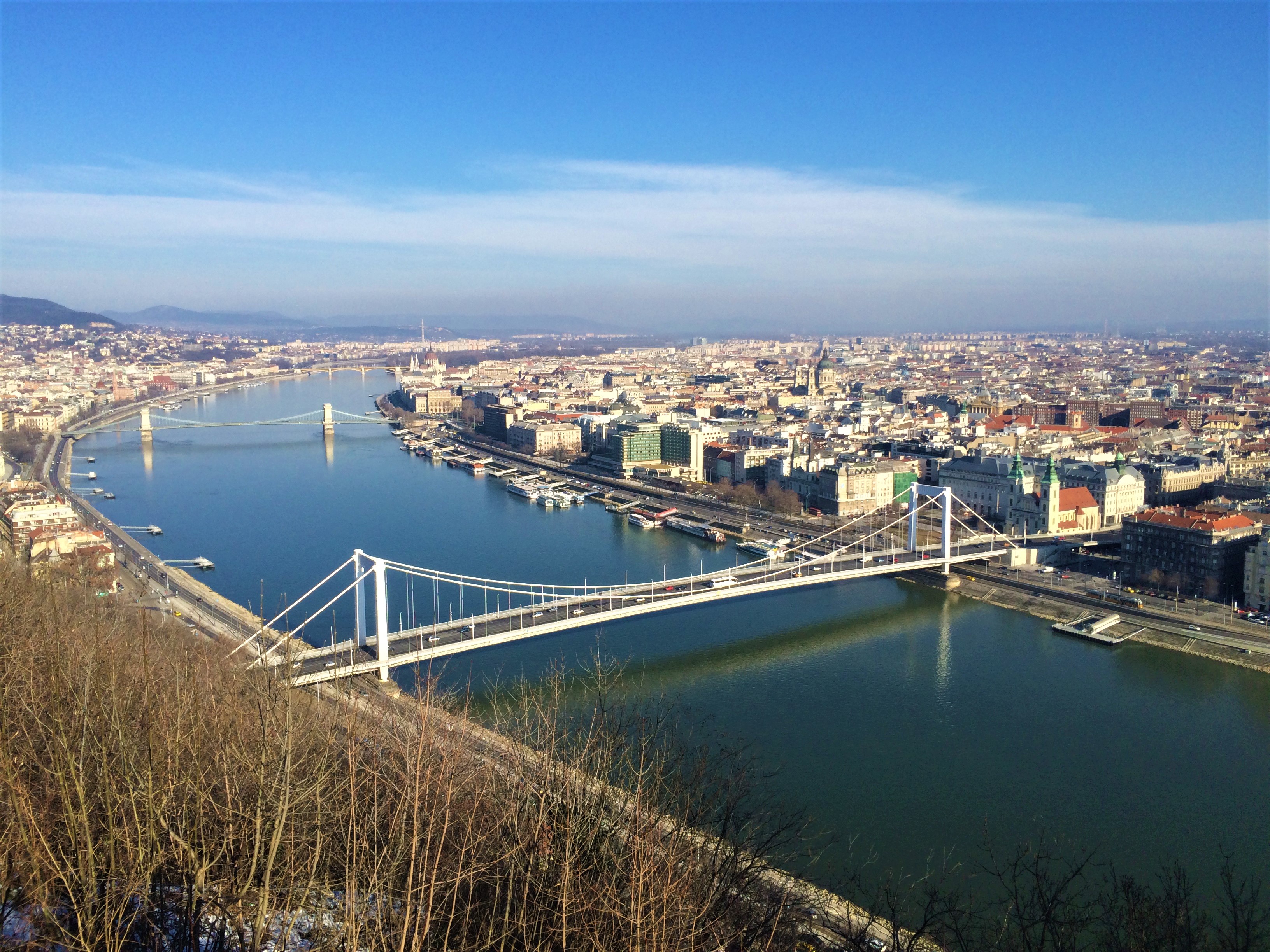

This fantastic tapestry of history makes Budapest a fascinating city, with everything from beautiful baroque palaces to brutalist communist buildings and stunning art nouveau cafes. One of the most spectacular bridges in Europe, the Chain bridge connects Pest with Buda. Across the bridge from the Pest side lies the Buda castle hill with the Fisherman’s Bastion and the stunning Matthias Church. The views from Fisherman’s Bastion across the Danube are magnificent with the largest building in Hungary, and the largest parliament building in the world, just across the river. The Gothic Revival style Hungarian Parliament Building is a grand sight and a landmark in Budapest.
The mix of influences, east and west, north, and south, makes Budapest one of the most exciting cities in Europe. The cost for hotel, food and drinks are low, and the quality of everything is impeccable. Some of our greatest dinners we have eaten in Budapest, and some of our greatest binges we have had in Budapest. The airport is close to the city centre and is modern and fresh. A taxi is the best option for transport, expect to pay around 26 euros one way and it will take around 35 minutes.
Budapest is a sprawling city, so maybe the first thing you should do is to mount a Segway and get a feel for the locations and the city itself, we really liked the Segway tour of Budapest.

Baths
The biggest draw by far to travel to Budapest are the natural springs and their baths dotted all over town. If you travel to Budapest and do not visit and swim in one of the thermal baths, you have failed. Budapest has since 1934 held the title “city of spas” and is has more thermal springs than any other capital city in the world. There are 118 springs in the Budapest area, providing over 70 million litres of thermal water per day. There are 9 medical spas in operation in Budapest currently open, and the Hungarians can get a prescription from their doctor to visit the spa. All the spas we have visited are exceptionally clean and well kept, and keep in mind that visiting the thermal spas is a cultural thing in Hungary and Budapest.

The most famous one and probably the one everybody has seen in photographs from Budapest is the grand Szechenyi bath. The huge yellow buildings with the grand pools outside make for great photos. And if you are going to visit one bath, this will probably be it. It is a huge place, and we recommend coming in the morning or late afternoon to avoid the biggest throngs of tourists. Bring your bathrobe from the hotel, a towel, slippers and swim trunks/suit of course. When you pay to enter, we also recommend splashing out a little extra to rent a cubicle/cabin to get changed and hang your clothes, it locks and keeps you stuff safe while you swim and relax. Szechenyi bath has 3 outdoor heated pools (the water gets cooled before entering the pools, it is way too hot coming directly from the springs) and 15 indoor pools. Make sure to walk around and try them all, some might smell a bit funky, but that funk is good for you, the water is packed with minerals and goodness for your body. A great hangover cure is to alternate between the cold pools and the hot pools.
There are a number of other thermal spas around town, you could choose the opulent Gellert bath or you could choose one of the older Ottoman build baths like the very cool Rudas built in the 16th century with old domed roofs or our favourite Veli Bej bath built around 1673 that has a very old and more intimate atmosphere. Read more about the baths at Off Beat Budapest. Next time we visit Budapest, we will spend the entire weekend visiting all the different spas around town, the relaxation and feeling of bliss just soaking in the thermal waters of the bath houses is awesome. We cannot recommend it highly enough to any visitor to Budapest.
Eating and bars

Budapest is filled with excellent restaurants, great cafes, well stocked nightclubs and one of the most unique Budapest things: the ruin bars. The ruin bars are the coolest drinking places in Europe in our opinion. Inside neglected pre-war buildings that in the early 2000s were dilapidated and almost falling apart, small bars started to pop up to serve cheap and affordable drinks to students and the young and hip people of Budapest. The Szimpla was the first and still is the big daddy of the ruin bars. A huge sprawling building, filled with stuff, stash and findings from the garbage heap, this is a bewildering place at first. Imagine a big apartment complex over 2 stories, fill the backyard and all rooms with different bar concepts, cafes, shisha pipe joints, hotdog stands, graffiti on every surface and a DJ. Add people, a lot of people at times, and you have a ruin bar. In later years the ruin bar concept has developed into more “conventional” bars and cafes, but the vibe is still present in many of the old haunts, especially the Szimpla Kert. Most of the bars are located within the old Jewish ghetto in district 7. Check out a comprehensive map at our friends Off Beat Budapest ruin bar page.
And we must mention the food of Budapest, like the drinks the prices are cheap, and the quality is high. For a great dinner on the Danube looking across the river to Buda castle, we recommend the Spoon boat. One of the greatest desserts we have had was served here, “The golden sphere”. The Terminal restaurant and bar is situated in an old bus station waiting hall in the city centre. Wicked food and great drinks. Last, we would like to mention Kiosk, a great restaurant and bar with a good outdoor seating area. For all local tips Budapestflow has the news. Budapest also has a good coffee scene, from the lush New York café to the quirky Zoo café, head over to Urban Wanderers for more tips.

Beer and wine
Since one of us is a beer doggy (guess who?), it is only fair to mention the Hungarian beers. Not particularly known for beer outside its borders, beer has been brewed in Hungary for well over a thousand years. The Hungarian breweries mainly produce light lager type beers and the best known domestic brands are Dreher, Borsodi and Soproni. Dreher is the most popular brand, try the Dreher Bak for a full-bodied dark beer with a malty caramel taste. Dreher also has one of the country’s most popular beers with their Arany Àszok, one of the few beer brands you might find in foreign shops, a light pilsner with a fizzy slightly bitter taste. From Soproni try the Soproni Fekete Demon, a delish brown beer with great aroma. You will probably also be introduced to the Hungarian fruit spirit Pàlinka, try it and see what you think, for us it was an acquired taste, and like with any fruity spirit, best avoided in large quantities. And last a shoutout to the Hungarian wines and their producers, later years Hungary has had a revival in wine production, and Hungarian wineries are producing some great red and white wines. We always drink local beer and wine when travelling, and the beer and wines of Hungary were all extremely good and combined with great prices, it made for some good drinking indeed.
Places to see and stuff to do
The most visited and most obvious place to use a day is Budapest castle hill and district. The Buda castle looms over Budapest, the site was first used as a castle complex by the Hungarian kings and was first completed in 1265. The massive Baroque building occupying the site was built between 1749 and 1769, it was ruined during the second world war, and rebuilt the following years after the war. The hill and castle are linked with the Pest side with the beautiful Chain Bridge and the Castle Hill Funicular. It is no problem using a full day exploring the castle hill, walking the narrow streets, having a beer at one of the many restaurants and ending up at the northern end where Fisherman’s Bastion and Matthias church is located. Fisherman’s Bastion is perhaps the best-known monument in Budapest with its unique panorama of Budapest. Next to Fisherman’s Bastion is the Matthias Church, said to have been first constructed in 1015. The coolest and different site to visit at Castle hill is the Hospital in the Rock Nuclear Bunker on the western side of the hill. A natural cave system used as a hospital during WW2 and expanded and repurposed as a top secret communist nuclear bunker and hospital.






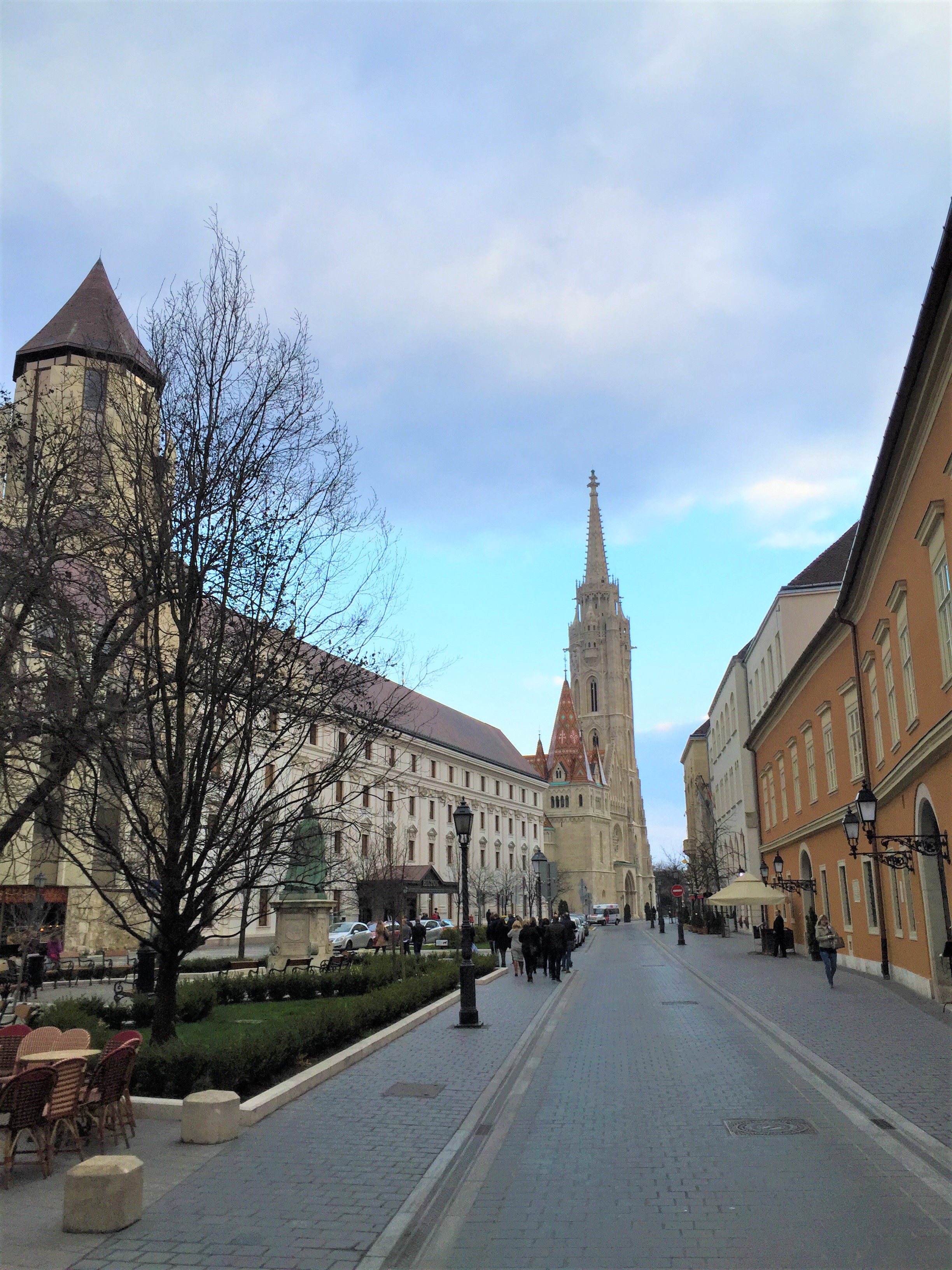


On the Pest side a natural point of interest and a great building is the aforementioned Parliament Building, one of the main symbols of the city. The structure is characterized by different architectural styles, from Neo-Gothic to Neo-Baroque and Neo-Renaissance. The building is 268 meters long on the east shore of the Danube, and is 123 meters wide and 96 meters high. This last feature symbolizes the fact that civil and spiritual power within the city have equal importance; St. Stephen’s Basilica just a few blocks from the Parliament building reaches the same height. Walk from Parliament building via the aptly named Liberty square, it has both a statue of Ronald Reagan and a Soviet war memorial. St Stephen’s Basilica is the largest church in Hungary and dedicated to Hungary’s first king St Stephen. It is free to enter, and we recommend a visit inside the church, it is beautiful. There are also stairs up to the cupola, the view from the gallery outside is grand, most of the Pest side and Buda castle is visible from above. On St Stephen’s square in front of the church there are many cool cafes and bars offering al fresco drinking and eating. If you are going to visit one museum in Budapest, you should visit the grim reality of the House of Terror. Located on the main street of Andràssy the house contains exhibits relating to the fascist and communist regimes in 20th century Hungary and is also a memorial to the victims of these regimes, including those detained, interrogated, tortured, and killed in the building. It is a soul stirring experience to see the hardships endured by citizens of Hungary. Last, we would recommend to have a walk around the old Jewish quarter of Budapest, now a very bohemian and eclectic neighbourhood with lots of independent shops, cafes and the infamous ruin bars of Budapest are located here. Check out Budapest Flow guide to the area.
A slightly different and off the beaten path site is the Memento Park just outside of the city centre. When the iron curtain fell, and the Soviet Union lost its grip on Hungary all the statues of Lenin and Stalin were removed from the city centre. Together with many big statues and installations that you could say is the typical Soviet iconography, the park makes for a cool visit. Walking among dictators and statues of workers carrying Soviet flags is a very strange thing, and not something experienced many other places in the world.
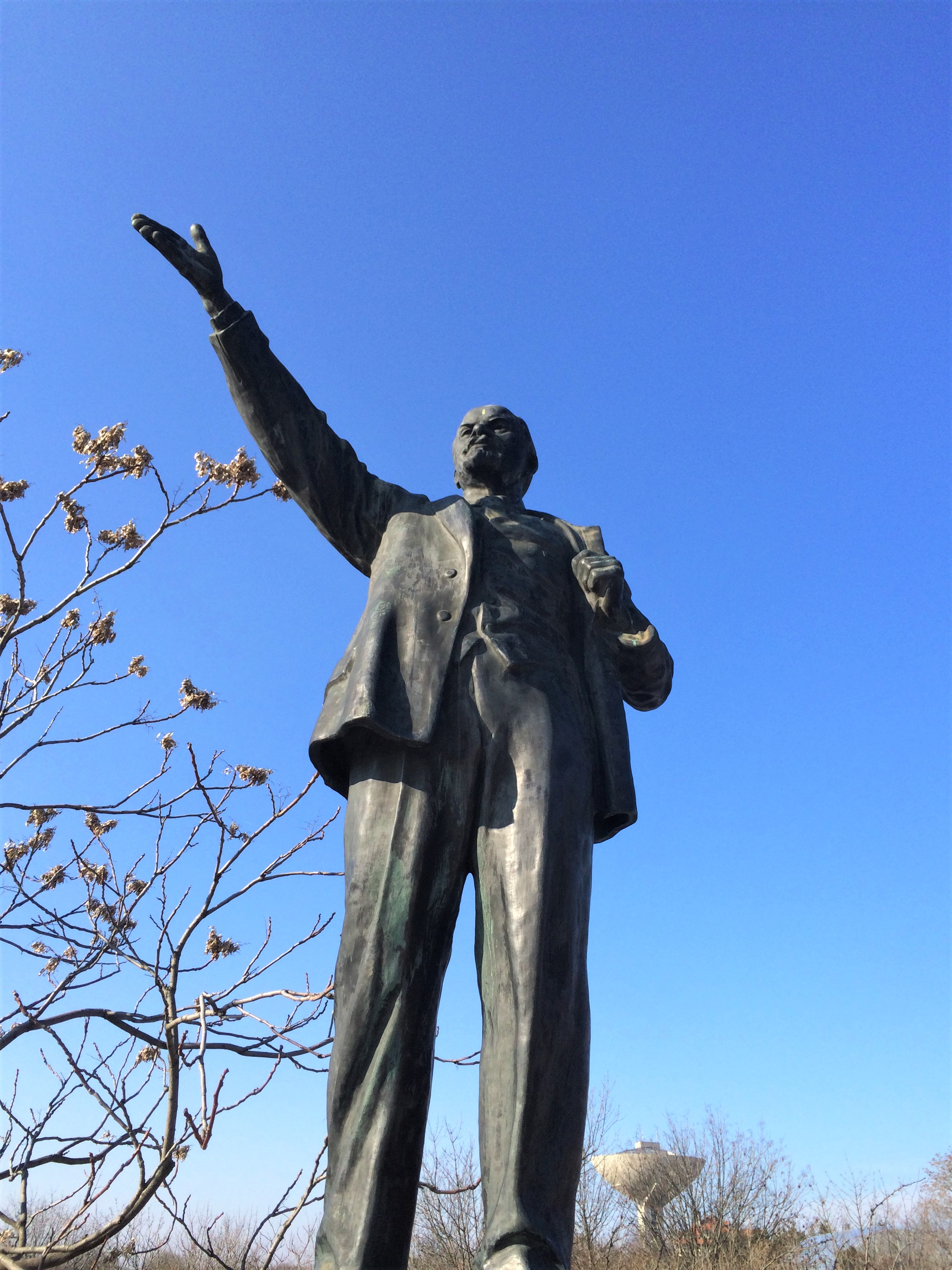




Make sure not to miss the grand Budapest Market Hall, built in 1897 it is the most beautiful and largest of all market halls in Budapest. It is a great place to check out local produce, people watching, beer drinking and shopping in general. The hangar sized building has 3 floors filled with everything from fresh fruits, meats, pickles, spices and of course the Hungarian paprika. The hall is easily accessible by foot, and via the pedestrian shopping street Vâci street that runs south from the nice square of Vörösmarty, around this square you will find most of the high street shops if shopping is your thing. Not far from this area is the main high street with all that Gucci shit (pun intended) and other extremely high street shops, just head for Andràssy street.
We were sorry to see our favourite hotel close in 2019. The Buddha Bar Hotel Budapest was one of our favourite hotels in Europe, located in an old palace it was opulent heaven. It is the only hotel we have stayed at in Budapest, so we have no hotel recommendations for you.
Budapest is a cool and not least cheap European city. The Hungarian capital is one of the best-value cities to travel to in Europe. The cost of food and drink is consistently low and as Hungary doesn’t use the Euro, the exchange rate in Budapest is also strong. Expect to pay between 1 and 2 euros for a pint of beer, depending on the quality of beer and location of bar. Taxi is be best a cheapest way to get around town, the drivers are a sneaky bunch, so expect to be hustled one or two times but the rides are so cheap it does not really matter.



Budapest is a great city to visit, for couples who want sights and good food, for friends who want beer and more beer, and for those who just want to kick back in a thermal pool and contemplate life. There is something for everyone in this dynamic crossroads between the east and the west.

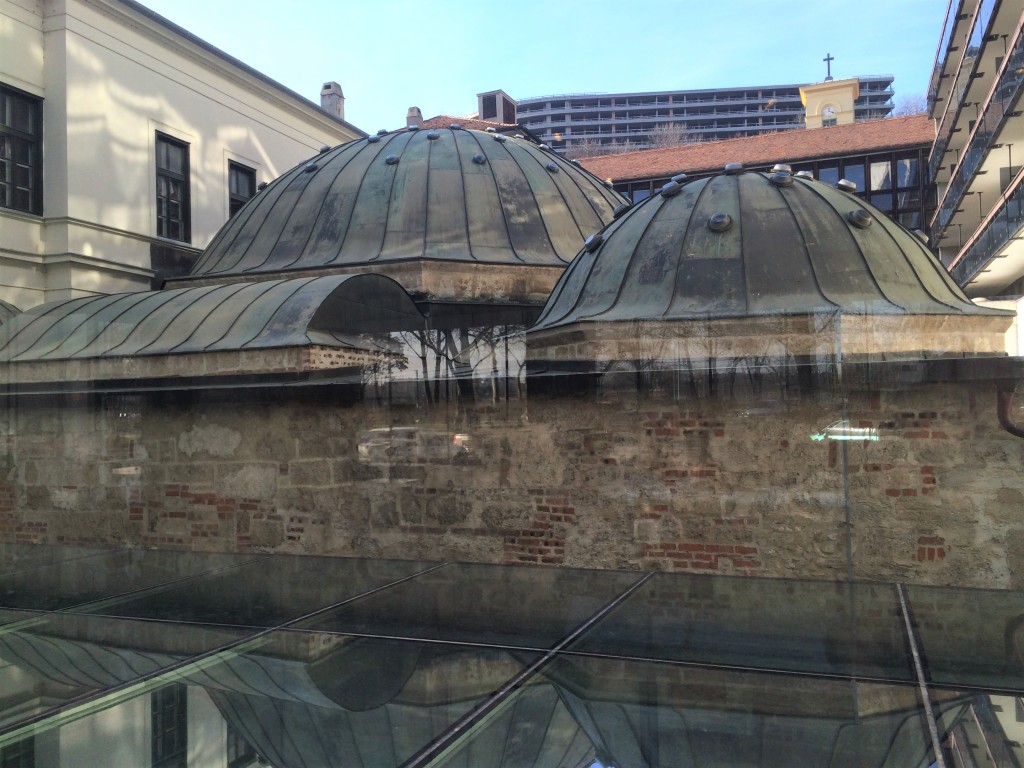







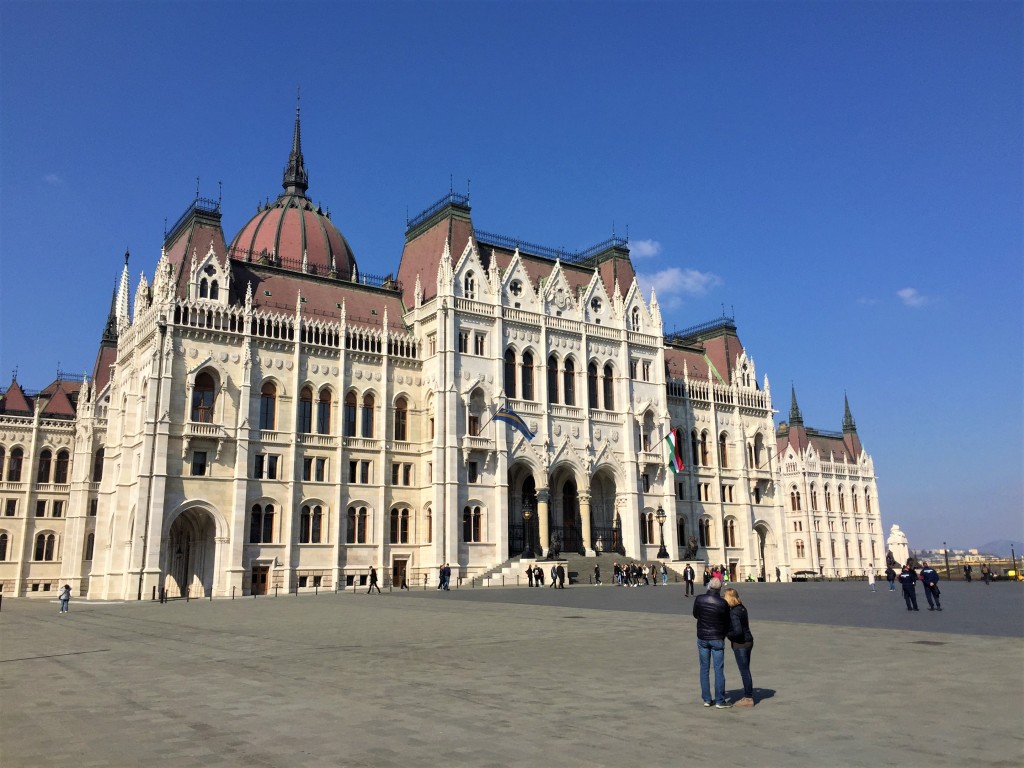


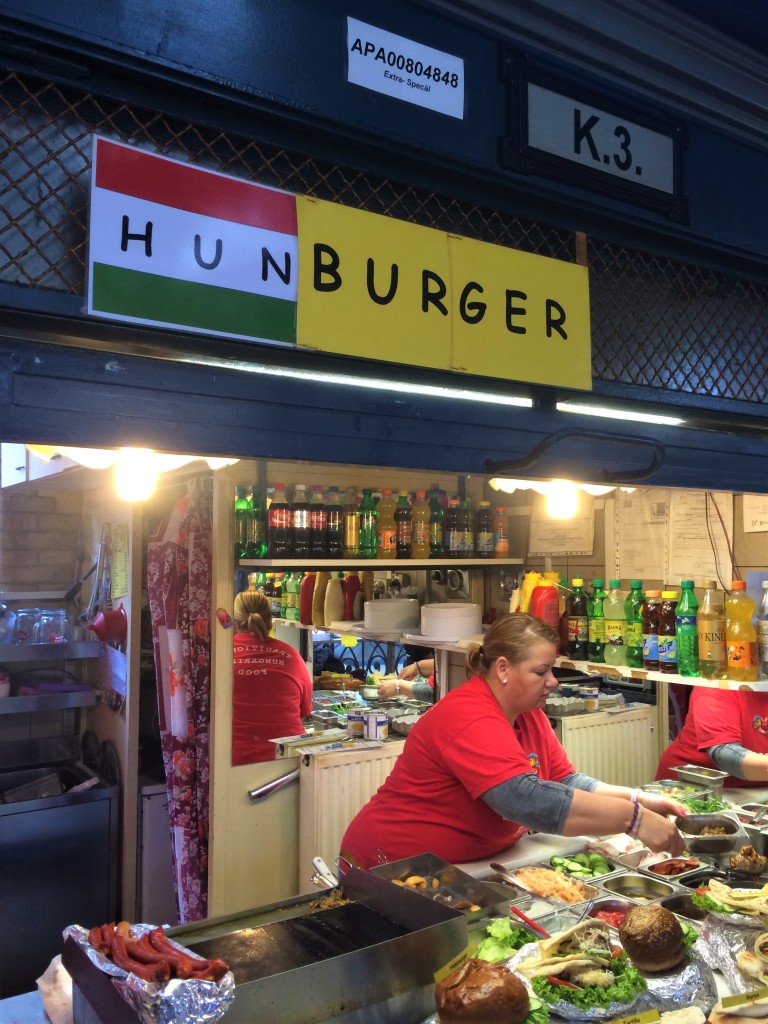




Wow, Budapest is such a beautiful city to explore and photograph. Would love to visit one day 😀
LikeLike
Absolutely👍we like it a lot.
LikeLike
Budapest is a special city 🙂 usually is cheap to travel Lisbon to Budapest, plus it is also in the centre of Europe, so I’ve flight many times there and from there discover other cities eheh your night photos are wonderful Orjan! have a great weekend, PedroL
LikeLike
Cant wait! Thanks👍
LikeLike
🙂 PedroL
LikeLike
Thank you for this interesting and concise history I didn’t know about all the blood-shed there, that’s very sad. In some places in Europe you can feel that sad energy of history. I have been to Warsaw and it was very much like that. It’s a stark contrast to where I come from New Zealand which has a different vibe and energy. I would definitely love to go to Budapest now, after your tour 😊😍
LikeLike
Thank you! And I agree, some places we feel the pain and horror of people and cities more that others. Berlin, Warsaw we agree, Hiroshima was really heavy, but for all the horrors there is always hope and happiness in people. NZ has a different vibe, totally agree, but to travel is to experience every feeling and learn from history not to make the same mistakes. Budapest is lovely.
LikeLike
Thank you for this thoughtful response 🙂 I hope to visit there too, even despite the bloody history. Here’s a video I made of my time in Warsaw. It captures some of the melancholy of the place.https://youtu.be/gmPknd3oTVw
Here is another one, a castle in western Poland that has a magical vibe 🙂 https://youtu.be/jIx1xHrb8ac
Hope to welcome you back to a marae here some day. Take care
LikeLiked by 1 person
Love to return to Budapest..I know some parts can give a sadness…but others areas are wonderful sites to see. I am excited I found your site .
LikeLiked by 1 person
Thank you, Budapest is a wonderful city👍
LikeLike
Hoping to get back to travelling soon.
LikeLiked by 1 person
Yes, we all do, just wondering when and where. Im thinking a beer in London first👍😃
LikeLike
Budapest, a city of many faces! It’s been on my travel wish list for a while and I’ve always had it in mind as a weekend break destination but reading your post, I think it could merit a longer visit. I love spa’s, bars and history so I’d have plenty to indulge in!
LikeLiked by 1 person
A weekend is more than enough for a start, like most major cities👍it is a compact town, so you get plenty done in 3 days.
LikeLike